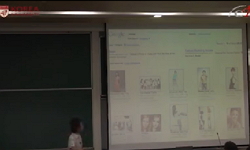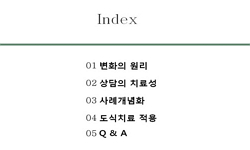In this paper, we have estimated a model that incorporates two key features of business cycles, co‐movement among economic variables and switching between regimes of expansion and recession, to aggregate quarterly data for the former Europe countrie...
http://chineseinput.net/에서 pinyin(병음)방식으로 중국어를 변환할 수 있습니다.
변환된 중국어를 복사하여 사용하시면 됩니다.
- 中文 을 입력하시려면 zhongwen을 입력하시고 space를누르시면됩니다.
- 北京 을 입력하시려면 beijing을 입력하시고 space를 누르시면 됩니다.
https://www.riss.kr/link?id=A104916132
-
저자
김장렬 (한국외국어대학교)
- 발행기관
- 학술지명
- 권호사항
-
발행연도
2011
-
작성언어
English
-
주제어
Business cycle ; asymmetry ; co‐movement ; common factors ; permanent ; transitory ; 경기변동 ; 비대칭성 ; 동조성 ; 공통인자 ; 영구성 ; 일시성
-
등재정보
KCI등재
-
자료형태
학술저널
- 발행기관 URL
-
수록면
199-220(22쪽)
-
KCI 피인용횟수
0
- 제공처
- 소장기관
-
0
상세조회 -
0
다운로드
부가정보
다국어 초록 (Multilingual Abstract)
In this paper, we have estimated a model that incorporates two key features of business cycles, co‐movement among economic variables and switching between regimes of expansion and recession, to aggregate quarterly data for the former Europe countries in the OECD. Two common factors, interpreted as reflecting the permanent and transitory components of the business cycle in the region, and estimates of turning points from one regime to the other were extracted from the data by using the Kalman filter and maximum likelihood estimation approach of Kim (1994).
Estimation results confirm a fairly typical stylized fact of business cycles ‐ recessions are steeper and shorter than recoveries, and both co‐movement and regime switching are found to be important features of the business cycle in the region. The two common factors produce sensible representations of the trend and cycle, and the estimated turning points agree quite well with independently determined chronologies.
참고문헌 (Reference)
1 Friedman, M, "The Plucking Model’ of Business Fluctuations Revisited" (31) : 171-177, 1993
2 Diebold, F. X, "Scoring the Leading Indicators" (62) : 369-402, 1989
3 Kim, C. J, "Permanent and Transitory Components of Recessions" (27) : 163-183, 2002
4 Kim, M. J, "New Index of Coincident Indicators: A Multivariate Markov Switching Factor Model Approach" (36) : 607-630, 1995
5 Mills, T. C, "Multivariate Markov Switching Common Factor Models for the UK" (55) : 177-193, 2003
6 Friedman, M, "Monetary Studies of the National Bureau" NBER 1964
7 Diebold, F. X, "Measuring Business Cycles: A Modern Perspective" (78) : 64-77, 1996
8 Burns, A. F, "Measuring Business Cycles" NBER 1946
9 Kim, C. J, "Friedman’s Plucking Model of Business Fluctuations: Tests and Estimates of Permanent and Transitory Components" (31) : 317-334, 1999
10 Kim, C. J, "Dynamic linear models with Markov switching" (60) : 1-22, 1994
1 Friedman, M, "The Plucking Model’ of Business Fluctuations Revisited" (31) : 171-177, 1993
2 Diebold, F. X, "Scoring the Leading Indicators" (62) : 369-402, 1989
3 Kim, C. J, "Permanent and Transitory Components of Recessions" (27) : 163-183, 2002
4 Kim, M. J, "New Index of Coincident Indicators: A Multivariate Markov Switching Factor Model Approach" (36) : 607-630, 1995
5 Mills, T. C, "Multivariate Markov Switching Common Factor Models for the UK" (55) : 177-193, 2003
6 Friedman, M, "Monetary Studies of the National Bureau" NBER 1964
7 Diebold, F. X, "Measuring Business Cycles: A Modern Perspective" (78) : 64-77, 1996
8 Burns, A. F, "Measuring Business Cycles" NBER 1946
9 Kim, C. J, "Friedman’s Plucking Model of Business Fluctuations: Tests and Estimates of Permanent and Transitory Components" (31) : 317-334, 1999
10 Kim, C. J, "Dynamic linear models with Markov switching" (60) : 1-22, 1994
11 Cerra, A, "Did Output Recover from the Asian Crisis" IMF 2003
12 Kim, C. J, "Common Stochastic Trends, common Cycles, and Asymmetry in Economic Fluctuations" (49) : 1189-1211, 2002
13 Kim, C. J, "Business Cycle Turning Points, a New Coincident Index, and Tests for Duration Dependence Based on a Markov Switching Model of the Business Cycle" (80) : 188-201, 1998
14 Chauvet, M, "An Econometric Characterization of Business Cycle Dynamics with Factor Structure and Regime Switching" (39) : 969-996, 1998
15 Stock, J. H, "A Probability Model of the Coincident Economic Indicators in Leading Economic Indicators: New Approaches and Forecasting Records" Cambridge UP 63-95, 1991
16 Hamilton, J. D, "A New Approach to the Economic Analysis of Nonstationary Time Series and the Business Cycle" (57) : 357-384, 1989
동일학술지(권/호) 다른 논문
-
- 한국외국어대학교 영미연구소
- 최정선(Jung-Sun Choi)
- 2011
- KCI등재
-
Presupposition and Rules for Anaphora
- 한국외국어대학교 영미연구소
- 정용권(Yong-Kwon Jung)
- 2011
- KCI등재
-
Permanent and Transitory Components of European Business Cycle
- 한국외국어대학교 영미연구소
- 김장열(Jang-Ryoul Kim)
- 2011
- KCI등재
-
In Honor of a Particular Motherhood
- 한국외국어대학교 영미연구소
- 주정숙(Jeong-Suk Joo)
- 2011
- KCI등재
분석정보
인용정보 인용지수 설명보기
학술지 이력
| 연월일 | 이력구분 | 이력상세 | 등재구분 |
|---|---|---|---|
| 2026 | 평가예정 | 재인증평가 신청대상 (재인증) | |
| 2020-01-01 | 평가 | 등재학술지 유지 (재인증) |  |
| 2017-01-01 | 평가 | 등재학술지 유지 (계속평가) |  |
| 2014-01-13 | 학술지명변경 | 한글명 : Journal of British & American Studies -> 영미연구외국어명 : 미등록 -> Journal of British & American Studies |  |
| 2013-01-01 | 평가 | 등재 1차 FAIL (등재유지) |  |
| 2010-01-01 | 평가 | 등재학술지 선정 (등재후보2차) |  |
| 2009-01-01 | 평가 | 등재후보 1차 PASS (등재후보1차) |  |
| 2008-01-01 | 평가 | 등재후보 1차 FAIL (등재후보1차) |  |
| 2007-01-01 | 평가 | 등재후보학술지 유지 (등재후보1차) |  |
| 2005-01-01 | 평가 | 등재후보학술지 선정 (신규평가) |  |
학술지 인용정보
| 기준연도 | WOS-KCI 통합IF(2년) | KCIF(2년) | KCIF(3년) |
|---|---|---|---|
| 2016 | 0.17 | 0.17 | 0.18 |
| KCIF(4년) | KCIF(5년) | 중심성지수(3년) | 즉시성지수 |
| 0.16 | 0.15 | 0.462 | 0.15 |




 KCI
KCI







